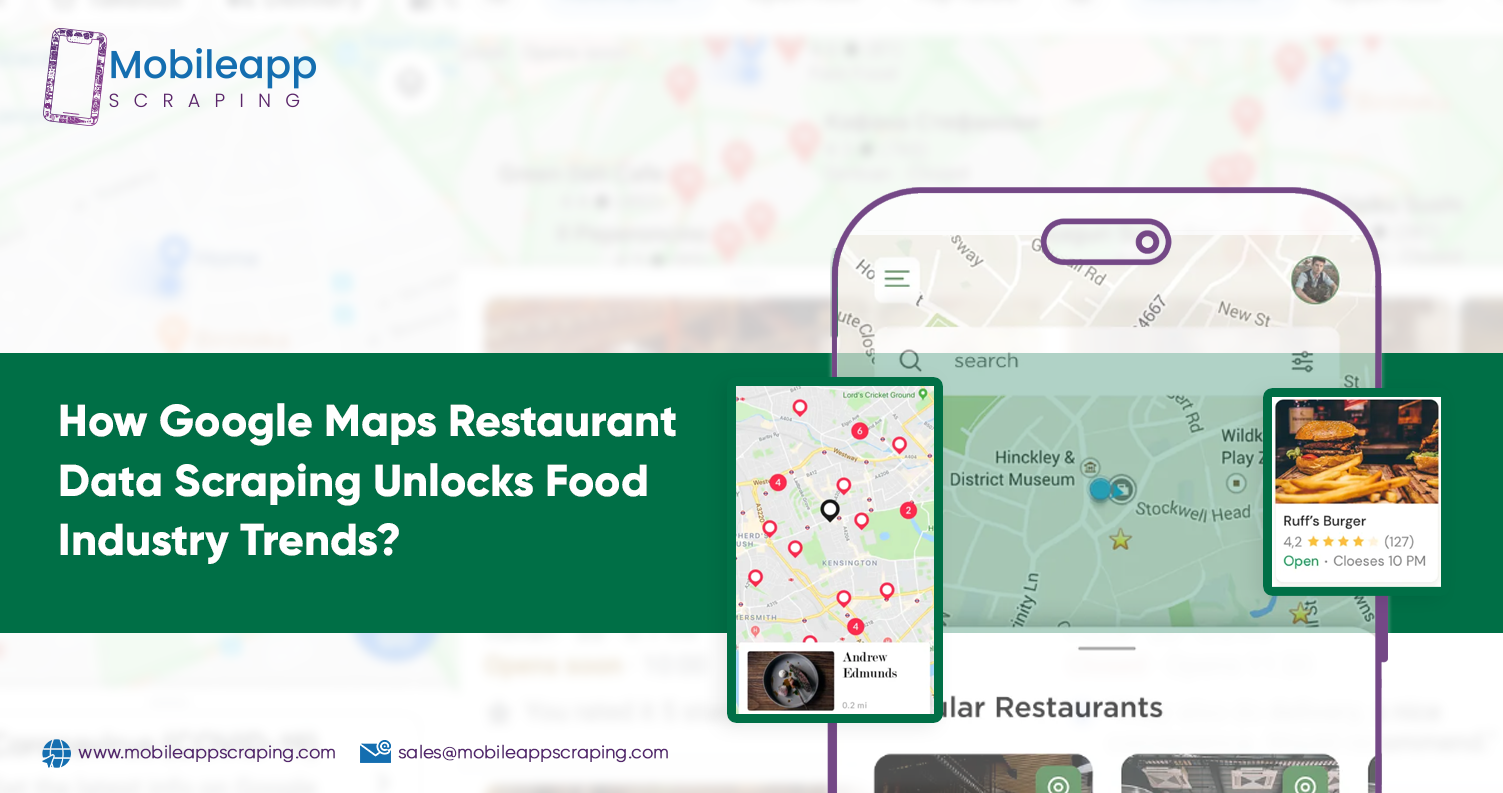
How Google Maps Restaurant Data Scraping Unlocks Food Industry Trends?
Introduction
The food industry constantly evolves, driven by shifting consumer preferences, emerging culinary trends, and innovative dining concepts. Businesses must harness data-driven insights to make strategic decisions to stay competitive in this fast-paced landscape. One powerful approach is Google Maps Restaurant Data Scraping, which allows businesses to extract valuable information from Google Maps.
By leveraging this data, companies can identify key industry trends, refine their operations, and gain a competitive edge. This blog will explore how this technology transforms the food industry and empowers businesses to thrive.
The Growing Importance of Data in the Food Industry
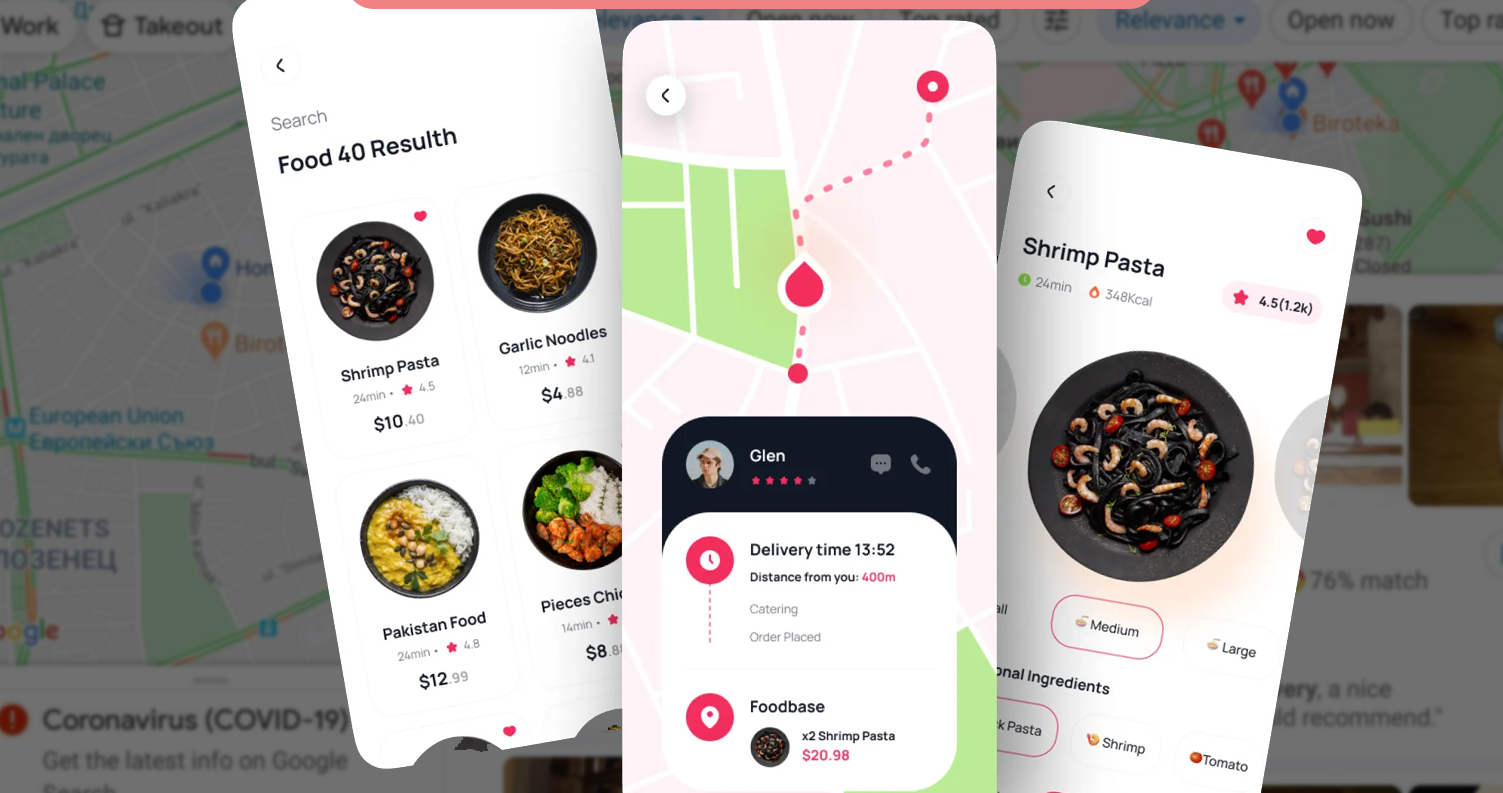
The restaurant sector is transforming rapidly, driven by shifting consumer preferences, evolving market dynamics, and intensifying competition. To maintain a competitive edge, businesses must rely on accurate, comprehensive, and timely data. One powerful solution is Google Maps Restaurant Listings Extraction, which enables businesses to collect structured insights into their competitors, target markets, and consumer behavior trends.
In an industry where even minor advantages can lead to substantial market growth, data-driven decision-making is crucial. Understanding customer preferences, spending habits, and competitor strategies empowers Food Delivery Scraping Service businesses to refine their menu offerings, optimize marketing efforts, and confidently plan expansion strategies.
Key Insights from Google Maps Data Scraping
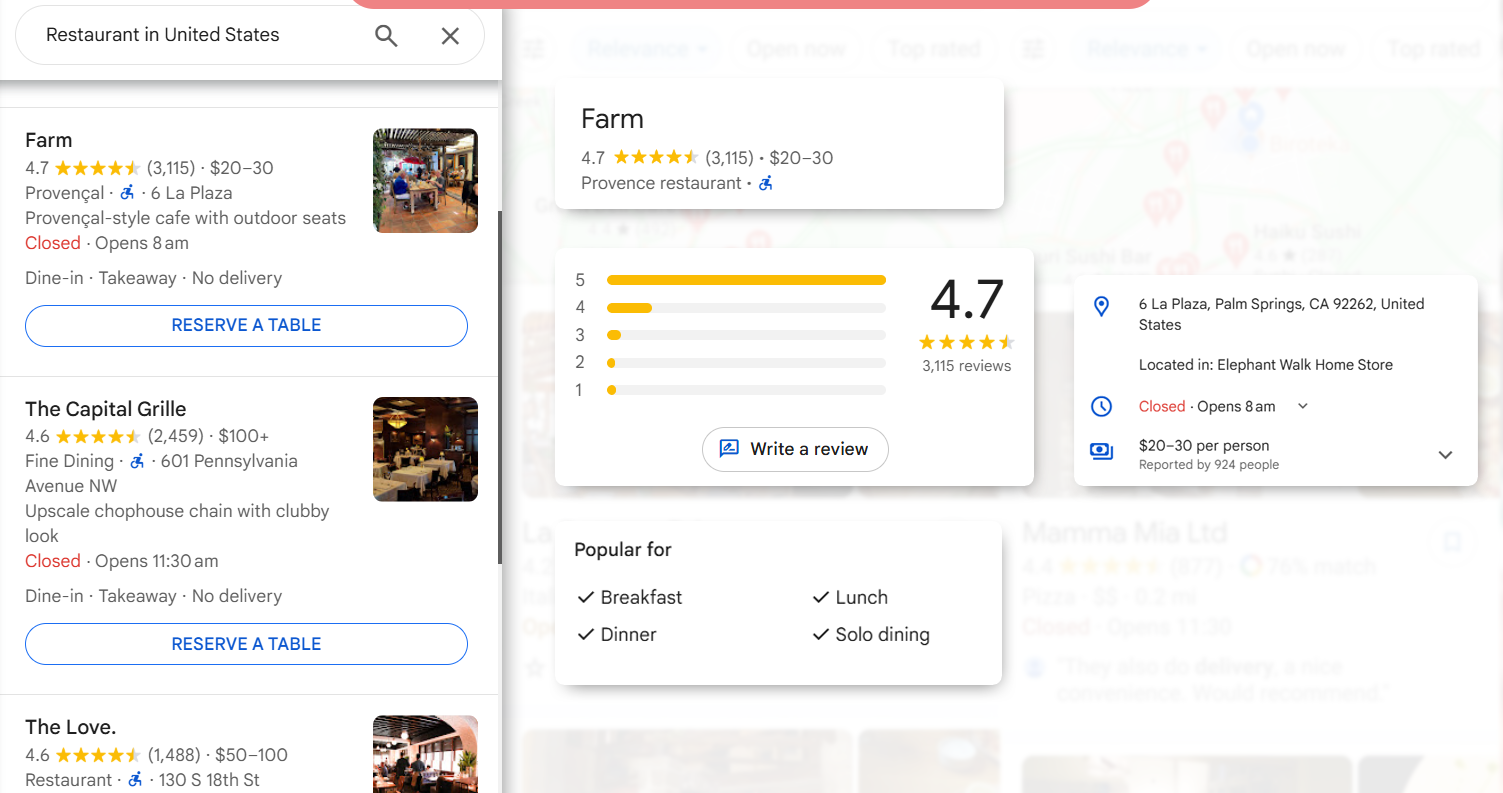
Businesses can use Google Maps Food Places Data Scraping to extract critical information that enhances market research, competitive analysis, and customer engagement.
The key data points that can be collected include:
- Basic Business Information: Essential details include the business name, address, contact number, website link, operating hours, and business category.
- Location Data: Geographic coordinates, neighborhood insights, and accessibility information help understand foot traffic and proximity to key landmarks.
- Customer Reviews: User-generated feedback, including star ratings, written testimonials, and response trends from businesses, providing deep insights into customer satisfaction and service quality.
- Menu Information: This section provides a comprehensive look at available dishes, pricing structures, and unique options such as vegan, gluten-free, or seasonal offerings.
- Photos: A collection of user-submitted and business-uploaded images showcasing the ambiance, food presentation, and overall dining experience.
- Popular Times: Data on peak hours and foot traffic trends, helping businesses optimize operations and marketing strategies.
- Competitor Presence: Insights into the density of similar businesses in a given area, aiding in strategic location selection and market positioning.
By analyzing this extensive dataset, businesses can gain valuable intelligence into market trends, consumer behavior, and competitive dynamics, empowering them to make data-driven decisions for growth and success.
Key Business Benefits of Google Maps Restaurant Data
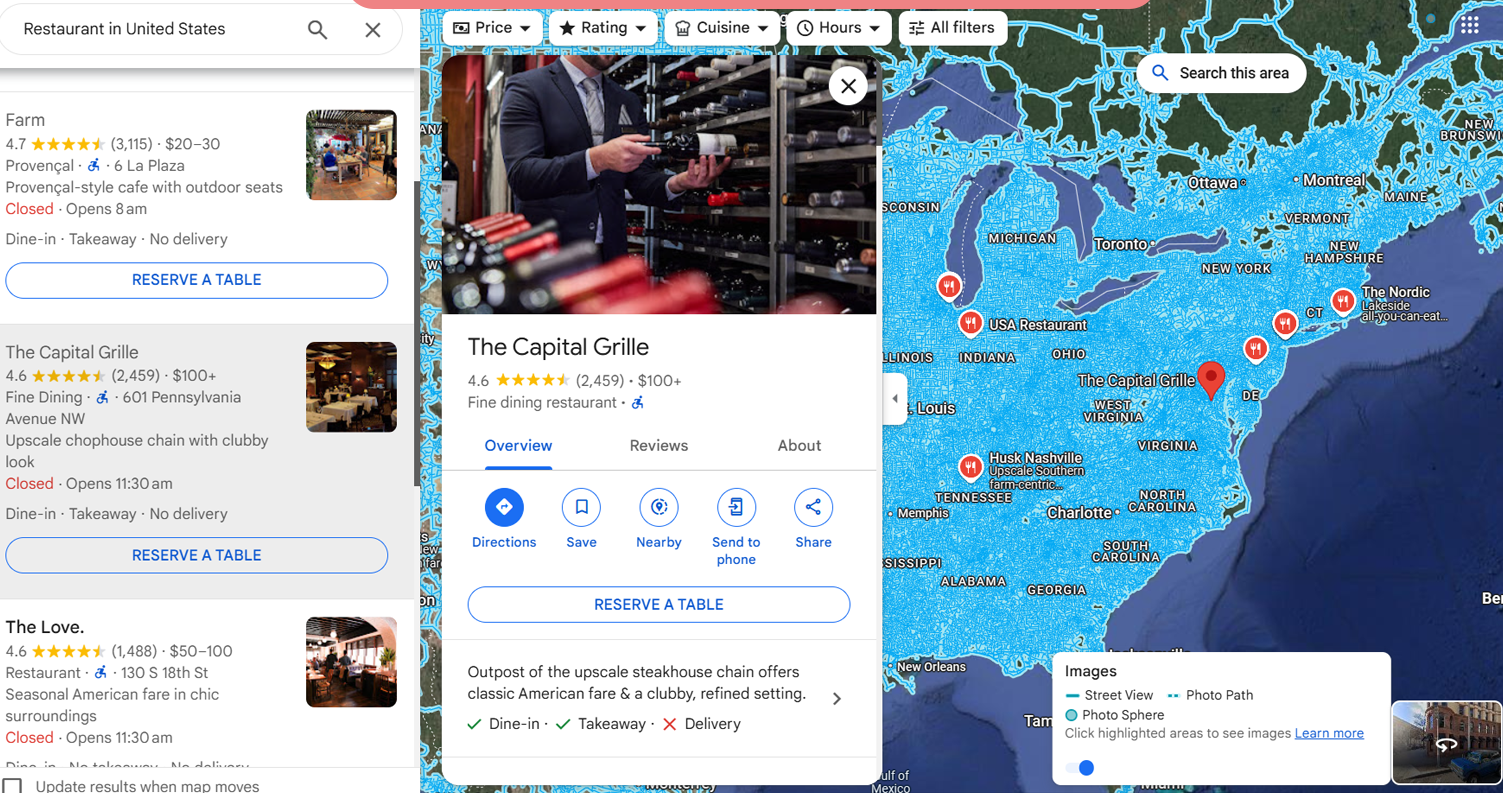
Google Maps Restaurant Data is a powerful resource for businesses seeking strategic insights into the restaurant industry. By leveraging this data, companies can enhance market analysis, understand consumer preferences, and optimize location strategies for expansion.
Market Analysis and Competitive Intelligence
With Google Maps Business Data Scraping, companies can perform in-depth market analysis by extracting valuable data on thousands of restaurants in their target regions. This data-driven approach enables businesses to uncover critical insights such as:
- The geographic distribution of various restaurant types helps identify high-demand and underserved areas.
- Price point patterns across different neighborhoods allow for competitive pricing strategies.
- The density of specific cuisine types aids in strategic menu planning and diversification.
- The presence of chains vs. independent restaurants offers insights into market saturation and opportunities for differentiation.
- Emerging restaurant concepts and themes, helping businesses stay ahead of industry trends.
By leveraging these insights, companies can fine-tune their market strategies, identify growth opportunities, and sharpen their competitive edge.
Consumer Preference Insights
Google Maps Restaurant Reviews Scraping unlocks consumer sentiment data, providing restaurants and food industry players with a deeper understanding of customer experiences and expectations.
Businesses can analyze reviews at scale to:
- Identify recurring praise points and common complaints, helping refine service and menu offerings.
- Track sentiment trends over time to gauge shifts in customer satisfaction.
- Compare consumer satisfaction levels across competing restaurants to identify areas for improvement.
- Detects emerging preference patterns, allowing businesses to tailor their offerings to evolving consumer tastes.
- Understand demographic-specific preferences, ensuring marketing and product strategies align with target audiences.
These insights empower businesses to enhance customer experience, resolve pain points, and effectively tap into unmet market needs.
Location Intelligence for Strategic Expansion
Building robust Restaurant Location Datasets enables businesses to make well-informed decisions when selecting new locations.
By analyzing key factors such as:
- Foot traffic patterns in potential neighborhoods, ensuring visibility and accessibility.
- Proximity to complementary businesses, creating opportunities for cross-promotion and increased customer flow.
- Competitor density and performance, helping businesses assess market saturation and potential success.
- Demographic alignment with target customers, ensuring the location caters to the right audience.
- The historical performance of similar restaurants in the area reduces risk and enhances forecasting accuracy.
With these data-driven insights, businesses can significantly improve their site selection strategy, minimize costly location errors, and optimize expansion efforts for long-term success.
Turning Raw Data into Actionable Insights
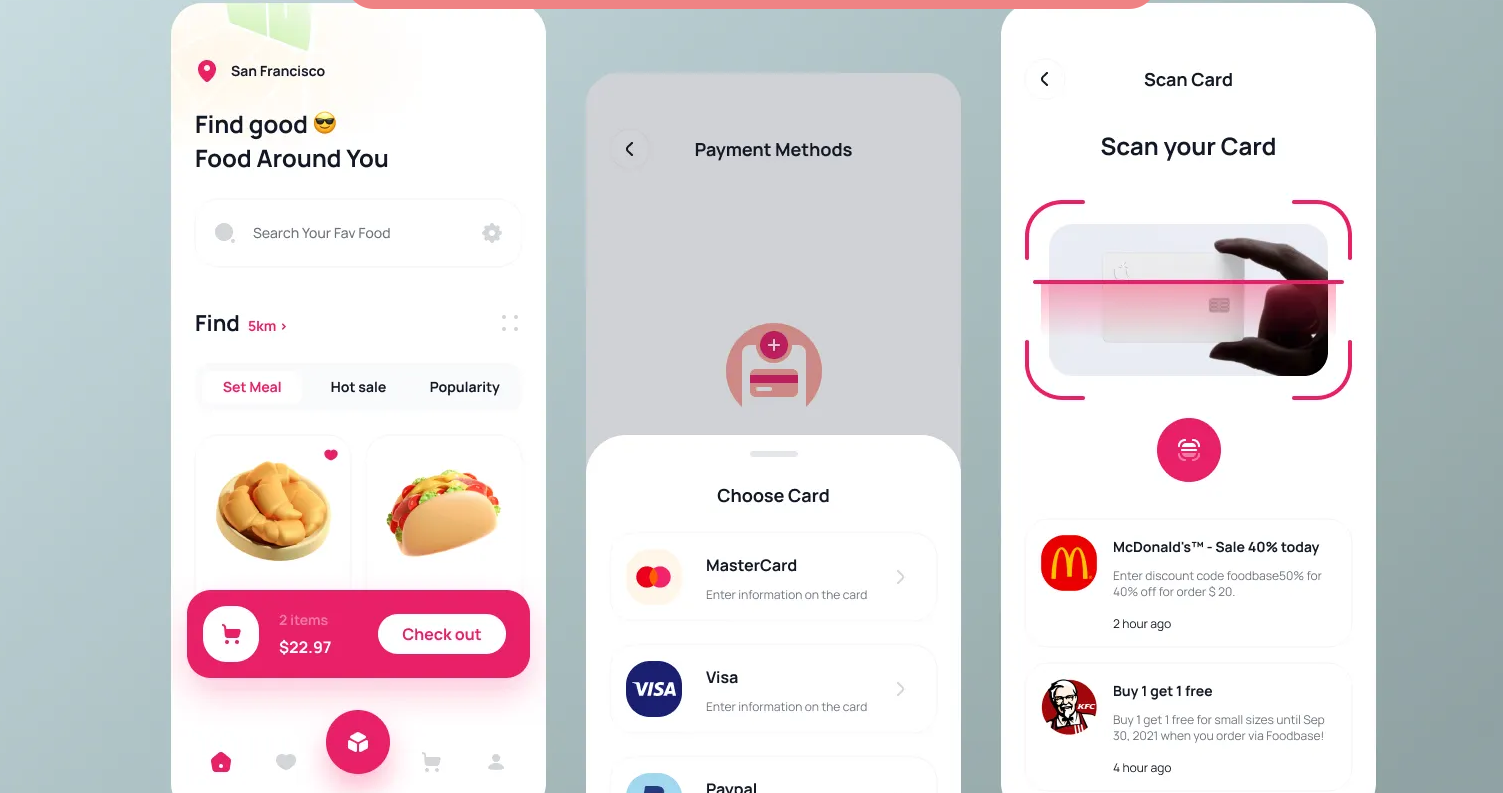
Gathering information through Google Maps Restaurant Data Scraping is just the first step. The true power of this data lies in its ability to drive strategic business decisions by transforming raw numbers into meaningful intelligence.
Trend Identification
Analyzing extensive datasets over time enables businesses to uncover key industry trends, such as:
- Emerging cuisine preferences that are gaining traction among consumers.
- Shifts in price sensitivity across different neighborhoods.
- The rise of new service models, including fast-casual dining and ghost kitchens.
- Patterns in menu innovation, such as trending ingredients or dish formats.
- Evolving consumer expectations around sustainability, health-conscious options, and ethical sourcing.
By leveraging these insights, restaurants can stay ahead of market shifts and adapt their strategies accordingly.
Menu Optimization
With data extracted using Restaurant Menu Google Data API, restaurants can conduct a detailed analysis of:
- Popular dishes across competing establishments.
- Competitive pricing benchmarks for similar offerings.
- The diversity of menu selections compared to industry standards.
- Seasonal trends that influence customer preferences.
- Demand for unique dietary options, including vegan, gluten-free, and keto-friendly choices.
This intelligence allows restaurants to fine-tune their menus to better align with customer expectations while maintaining competitive pricing and a distinct brand identity.
Review Analysis for Service Improvement
By Scraping Google Maps Restaurant Ratings, businesses gain valuable insights into customer satisfaction, including:
- Frequent service-related compliments and complaints.
- Guest expectations regarding wait times, staff professionalism, and ambiance.
- Service benchmarks set by competitors.
- The impact of operational changes on overall ratings.
- Correlations between staff mentions in reviews and corresponding rating trends.
With these insights, restaurants can make data-driven improvements to enhance customer experience, address recurring issues, and refine service quality to boost overall satisfaction and loyalty.
Technical Approaches to Google Maps Data Collection
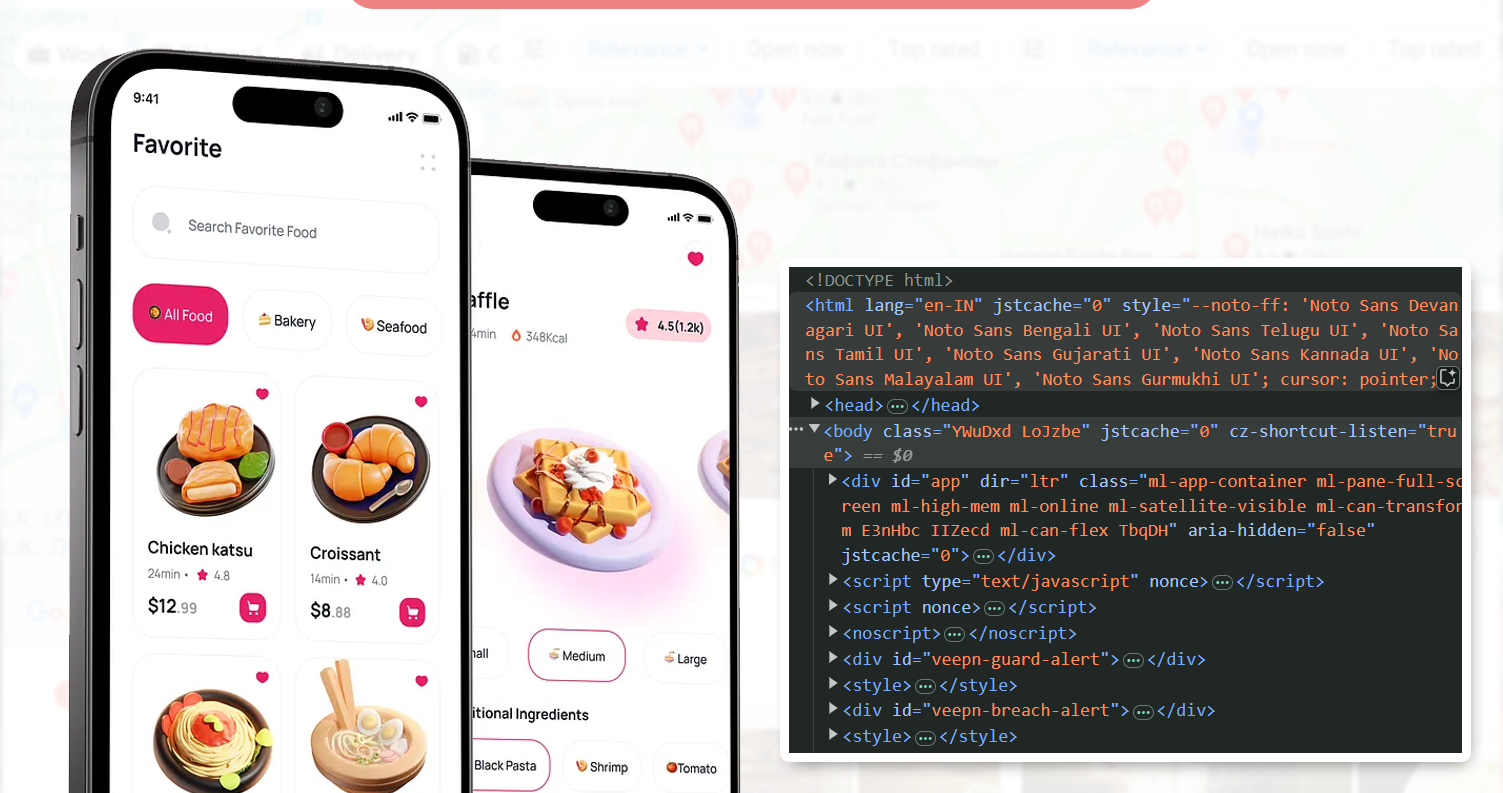
API-based access and web scraping techniques are two primary methods commonly used to collect data from Google Maps.
API-Based Methods
The Restaurant Menu Google Data API provides a structured approach to accessing Google Maps data. While Google offers various APIs, such as the Places API, these official channels have limitations on data volume and the types of information that can be retrieved.
Web Scraping Techniques
Advanced web scraping techniques can create a more comprehensive and flexible data collection strategy.
These methods include:
- Developing custom scraping scripts using Python and specialized libraries.
- Implementing headless browser automation for seamless data extraction.
- Utilizing proxy rotation to bypass access restrictions.
- Applying data normalization and structure parsing for consistency.
- Setting up scheduled data collection to create time-series datasets.
Data Processing and Analysis
Once data is gathered through Google Restaurant Location Data Scraping, it undergoes a structured workflow to ensure accuracy and usability.
These methods include:
- Cleaning and normalization to remove inconsistencies.
- Structuring data into queryable databases for easy access.
- Analyzing datasets with statistical methods for valuable insights.
- Visualizing information to enhance data-driven decision-making.
- Integrating data with business intelligence systems for strategic applications.
This streamlined approach ensures high-quality, actionable insights from Google Maps data, empowering businesses with precise and timely information.
Ethical and Legal Considerations
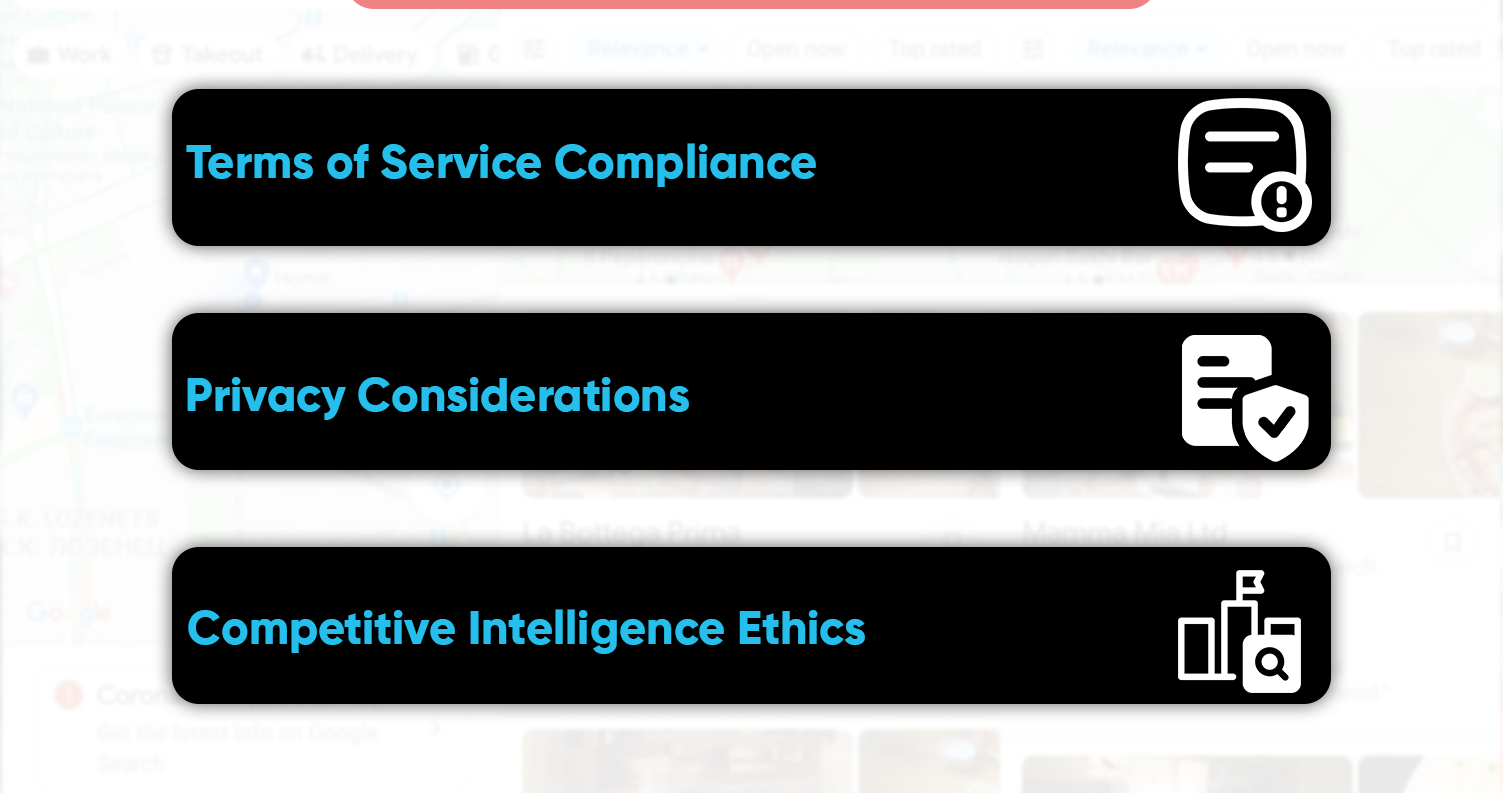
When leveraging Google Maps Restaurant Data Scraping for business insights, it is crucial to consider ethical and legal implications to ensure responsible data usage.
Terms of Service Compliance
Google imposes restrictions on automated data collection through its Terms of Service. To align with these guidelines, businesses should thoroughly review and understand the current terms, implement rate-limiting strategies, and adopt respectful access patterns. Exploring official API options can provide a compliant alternative.
Privacy Considerations
Ethical data collection must prioritize personal information protection and respect reviewer anonymity during analysis. Businesses should also ensure appropriate data storage and security measures while maintaining transparency regarding the use of collected information.
Competitive Intelligence Ethics
Gathering competitive intelligence requires relying only on publicly available information and avoiding deceptive collection practices. Businesses must uphold integrity in data representation while ensuring compliance with competitors' intellectual property rights.
By integrating these ethical and legal considerations, businesses can responsibly use Google Maps Restaurant Data Scraping to gain valuable market insights.
How Can Mobile App Scraping Help You?
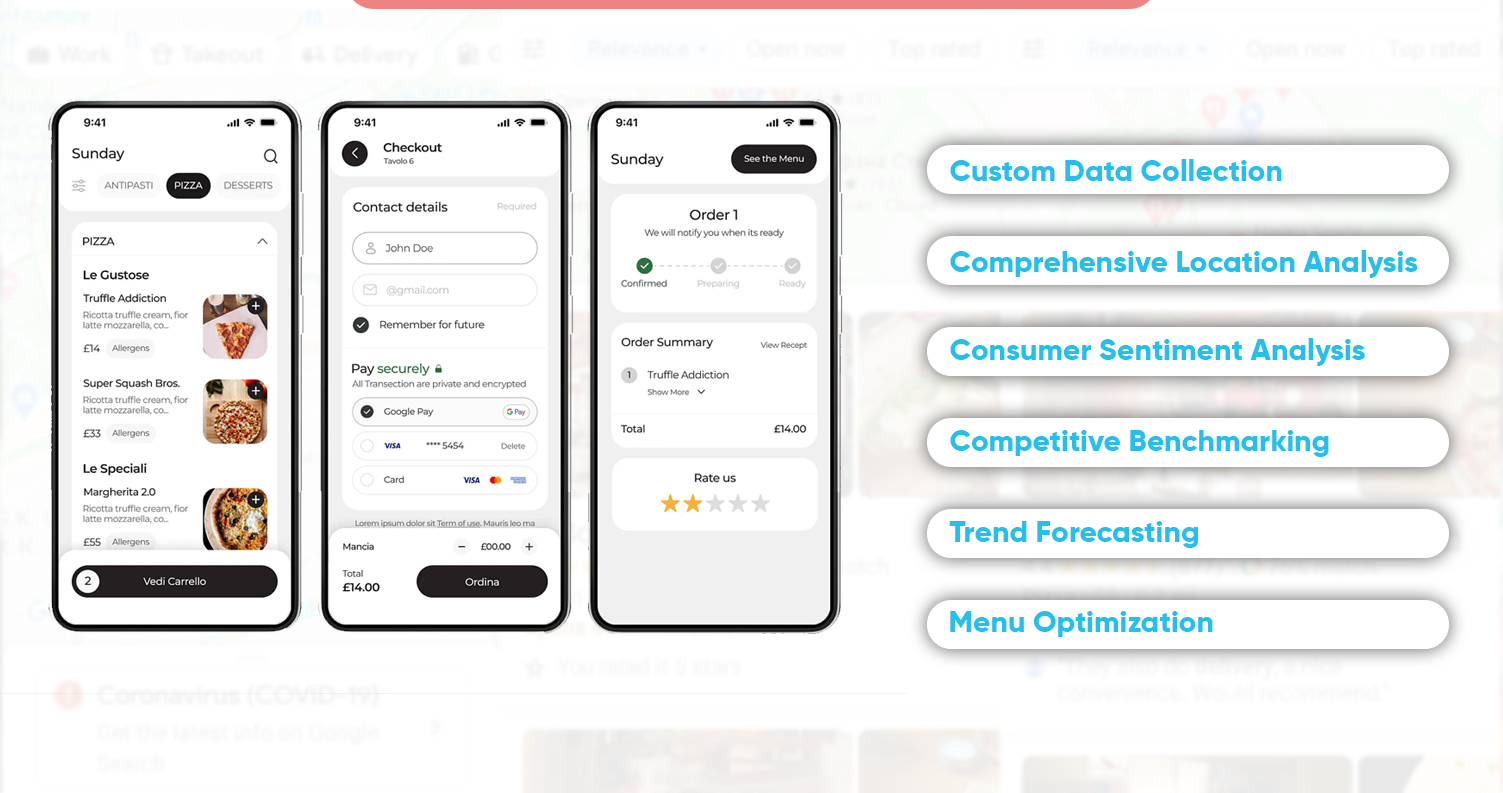
We specialize in delivering Google Maps Business Data Scraping solutions to turn raw data into actionable business insights.
Our services include:
- Custom Data Collection: We develop tailored scraping solutions to meet your unique business intelligence needs, ensuring you capture the restaurant metrics most relevant to your strategy.
- Comprehensive Location Analysis: Gain a competitive edge with our detailed Restaurant Location Datasets, offering macro-level market insights and micro-level competitor assessments to support your expansion plans.
- Consumer Sentiment Analysis: Leverage Google Maps Restaurant Reviews Scraping to uncover customer preferences and pinpoint opportunities to refine and differentiate your offerings.
- Competitive Benchmarking: Stay ahead by systematically monitoring competitor performance, menu changes, and customer feedback with our tool to Scrape Google Maps Restaurant Ratings.
- Trend Forecasting: Analyze historical data trends to predict emerging market movements before competitors catch on.
- Menu Optimization: Maximize profitability and stay ahead of changing customer preferences by leveraging insights from our tools to Scrape Restaurant Menu Google.
Conclusion
In an industry with tight margins and fierce competition, insights from Google Maps Restaurant Data Scraping can provide the edge needed for success. Whether for strategic growth, optimizing menus, or improving services, data-driven decision-making has become essential for thriving in the food industry.
Ready to revolutionize your restaurant or food service business? Contact Mobile App Scraping today to learn how our tailored data scraping solutions can unlock valuable insights. Our expert team focuses on ethical, comprehensive data collection and analysis to deliver tangible business results.
Applications of Blinkit And Zepto Data Scraping
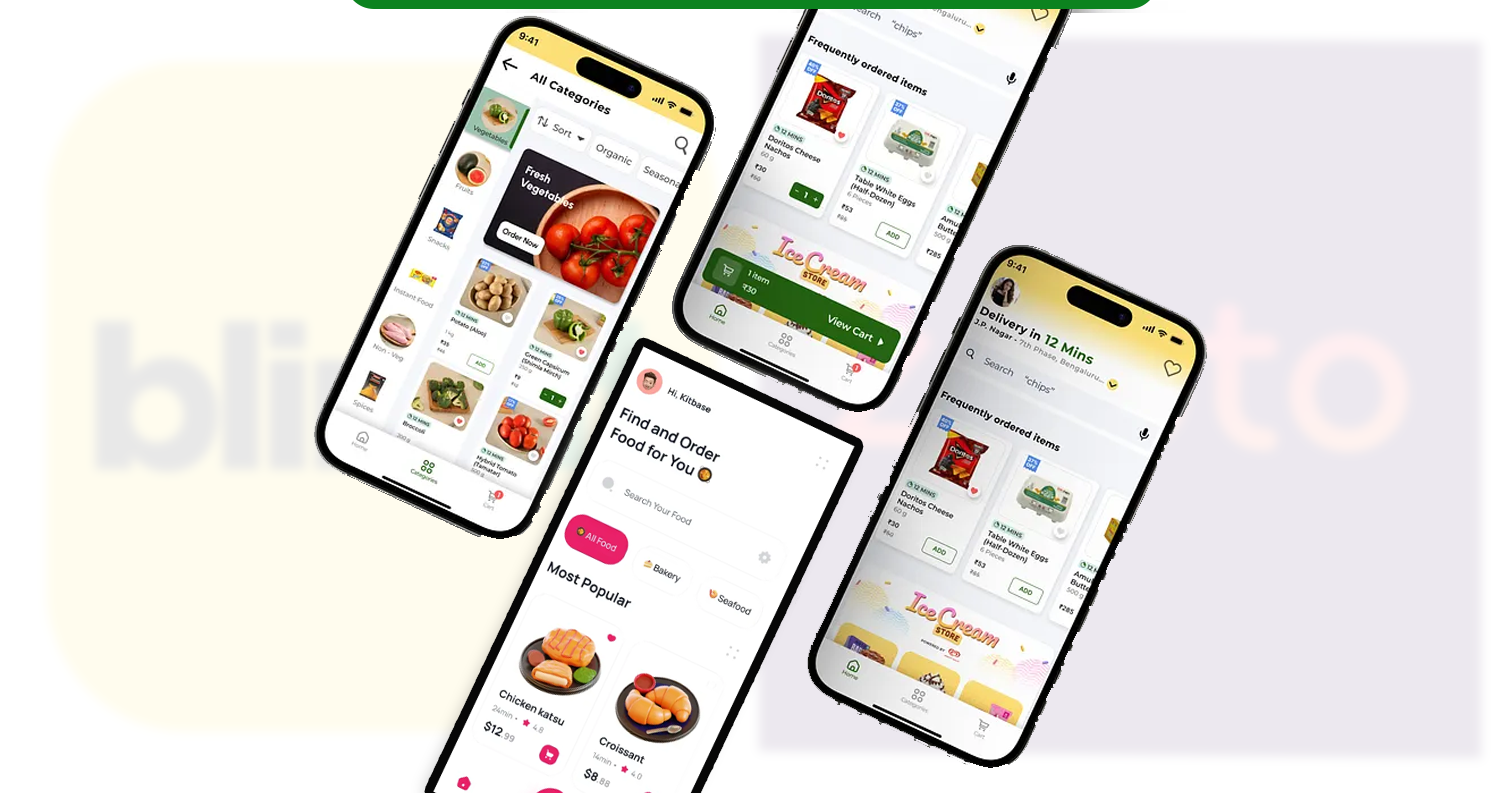
Data scraping from Blinkit and Zepto provides valuable insights for various industries, enabling businesses to optimize pricing strategies, track consumer trends, and make data-driven decisions.
Here’s how different sectors can leverage this data:
Retailers & E-commerce Platforms
Retailers can leverage Zepto Price Monitoring Data Scraping to maintain competitive pricing strategies, track real-time price fluctuations, and optimize inventory management. Gaining insights into market dynamics, they can adjust pricing structures to enhance profitability and customer retention.
Grocery Brands & FMCG Companies
Analyzing Blinkit Price Monitoring Data for FMCG companies provides valuable insights into product demand, promotional effectiveness, and shifting consumer preferences. This data-driven approach enables brands to fine-tune marketing strategies, optimize distribution channels, and maximize sales potential.
Data Analytics & Market Research Firms
Data analytics and market research firms can Extract Grocery App Data to conduct in-depth predictive analysis and identify emerging consumer trends. By leveraging this data, they can offer businesses strategic recommendations for product positioning, demand forecasting, and competitive benchmarking.
Investors & Business Strategists
Investors and business strategists can make well-informed, data-backed decisions by analyzing market trends from Scrape Zepto Price Monitoring. This insight helps them assess business opportunities, evaluate market potential, and identify growth-driven investment strategies.
By integrating the Blinkit Price Monitoring Dataset into their analytical framework, businesses can gain a competitive edge in the evolving grocery sector, ensuring informed decision-making and sustained market leadership.
Key Challenges in Tracking Grocery Prices & Stock
Grocery App Price Scraping offers valuable insights, but businesses often encounter several hurdles when effectively extracting and leveraging real-time data. Addressing these challenges is crucial for optimizing pricing strategies and inventory management.
Frequent Price Fluctuations
Prices on platforms like Blinkit and Zepto frequently change due to demand shifts, supplier costs, and promotional discounts. Without a robust Zepto Price Monitoring Data Scraping strategy, businesses may find tracking and responding to these dynamic pricing trends difficult. Implementing automated scraping solutions ensures real-time, accurate data collection, enabling businesses to adjust pricing strategies swiftly.
Rapid Changes in Stock Availability
Inventory levels fluctuate rapidly, making it challenging to maintain precise stock insights. Products may go out of stock or be restocked frequently, affecting supply chain decisions. Leveraging Blinkit Price Monitoring Data, businesses can track real-time stock movements and proactively manage inventory to prevent shortages or overstocking.
Anti-Scraping Barriers
Many grocery apps implement security measures to restrict large-scale data extraction, posing a challenge for businesses that rely on real-time market intelligence. Ethical web scraping techniques and API-based solutions allow businesses to collect essential data while staying compliant with platform guidelines, ensuring sustainable and reliable data extraction.
By effectively addressing these challenges, businesses can enhance their pricing intelligence, improve inventory planning, and drive greater operational efficiency and profitability.
How Mobile App Scraping Can Help You?
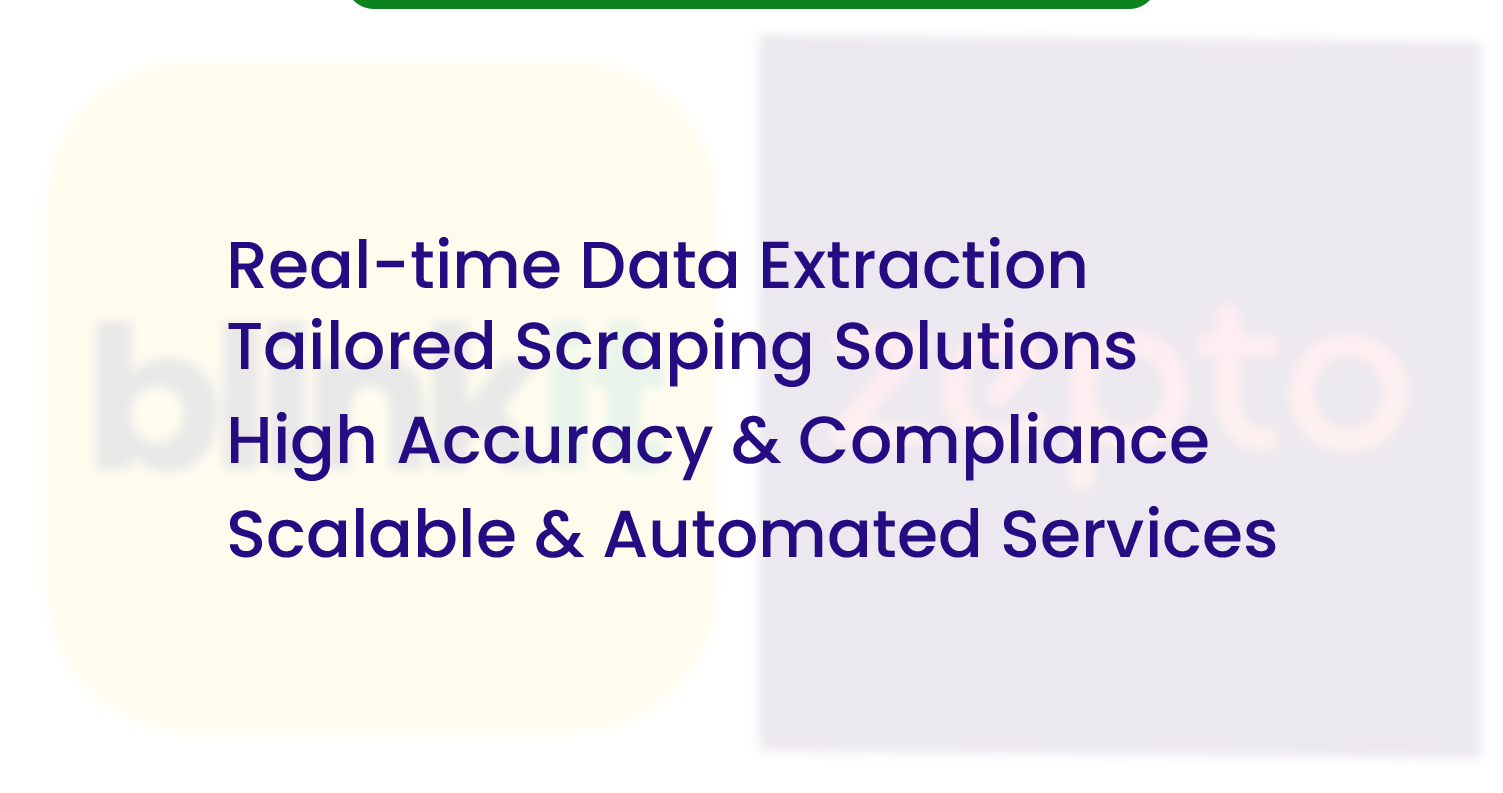
We provide advanced data extraction solutions to give businesses real-time insights into pricing trends and stock availability. With our expertise in Zepto API Scraping, we ensure seamless access to accurate and up-to-date information, enabling organizations to make data-driven decisions confidently.
Here’s why we are the ideal choice for data scraping:
- Real-time Data Extraction: Our advanced solutions allow businesses to efficiently Scrape Zepto Price Monitoring Data and conduct Blinkit Data Scraping, ensuring access to the latest market insights.
- Tailored Scraping Solutions: Every business has unique requirements, so we provide customized data scraping services to match your specific needs.
- High Accuracy & Compliance: Our ethically sourced data and legally compliant web scraping techniques guarantee data accuracy while adhering to industry regulations.
- Scalable & Automated Services: Whether you need periodic reports or continuous real-time data monitoring, our solutions are designed to scale with your business growth.
With our state-of-the-art technology, businesses can seamlessly Extract Grocery App Data, equipping them with valuable insights to stay competitive in the ever-evolving market.
Conclusion
In the dynamic landscape of online grocery delivery, real-time data plays a crucial role in driving business success. Blinkit And Zepto Data Scraping empowers companies to precisely track prices and stock availability, offering valuable insights for informed decision-making. Our data scraping technique allows businesses to refine their pricing strategies, prevent stock shortages, and maintain a competitive edge.
Ready to integrate Blinkit And Zepto Data Scraping into your business? Connect with Mobile App Scraping for accurate, real-time data solutions customized to your needs. Stay ahead with data-driven strategies built for success!

